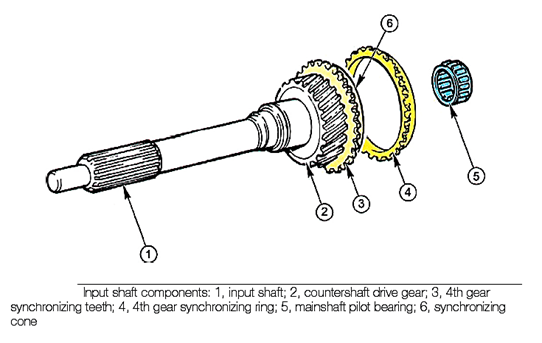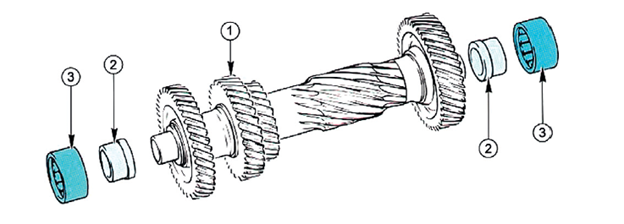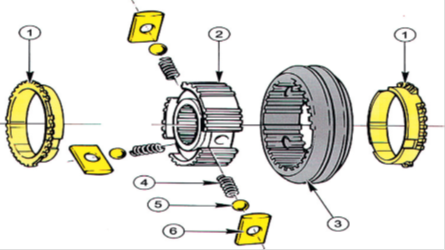Gears And Components
Introduction:
There is a wide range of gearboxes in use. However, although the internal components differ, the principles remain the same. The input shaft transmits the torque from the clutch, via the countershaft (or layshaft) to the transmission output shaft.
Input shaft components:

- The input shaft transmits the torque from the clutch, via the countershaft (or layshaft) to the transmission output shaft.
- It runs inside a bearing at the front and has an internal bearing, which runs on the main shaft, at the rear.
- The input shaft carries the countershaft driving gear and the synchronizer teeth and cone for fourth gear.
- The main shaft is mounted in the transmission housing at the rear and the input shaft at the front.
- This shaft carries all the main forward gears, the selectors and clutches.
- All the gears run on needle roller bearings. The gears run freely unless selected by one of the synchronizer clutches.
COUNTERSHAFT/LAYSHAFT:

- The countershaft is sometimes called a layshaft. It is usually a solid shaft containing four or more gears.
- Drive is passed from here to the output shaft, in all gears except fourth. The countershaft runs in bearings, fitted in the transmission case, at the front and rear.
- An extra gear has to be engaged to reverse the direction of the drive. A low ratio is used for reverse, even lower than first gear in many cases. The reverse idler connects the reverse gear to the countershaft. Countershaft/layshaft: 1, gears fixed to the countershaft; 2, inner race; 3, roller bearing
- Power travels in to the gearbox via the input shaft. A gear at the end of this shaft drives a gear on the countershaft (layshaft).
- Gears of various sizes are mounted on the layshaft. These gears drive other gears on a third motion shaft, also known as the output shaft.
- The gearbox produces various gear ratios by engaging different combinations of gears. For reverse, an extra gear called an idler operates between the countershaft and the output shaft. It turns the output shaft in the opposite direction to the input shaft.
Synchronizer components:

A synchromesh mechanism is needed because the teeth of dog clutches clash if they meet at different speeds. A synchromesh system synchronizes the speed of two shafts before the dog clutches are meshed; hence the name.
There are three stages of engagement:
Neutral, synchronizing, shift position.
The system works like a friction-type cone clutch. The collar is in two parts and contains an outer toothed ring, which is spring-loaded to sit centrally on the synchromesh hub. When the outer ring, or synchronizer sleeve, is made to move by the action of the selector mechanism, the cone clutch is also moved because of the blocker bars.
Synchronizer components: 1, synchronizer; 2, hub; 3, selector sleeve; 4, spring; 5, ball; 6, blocker bar